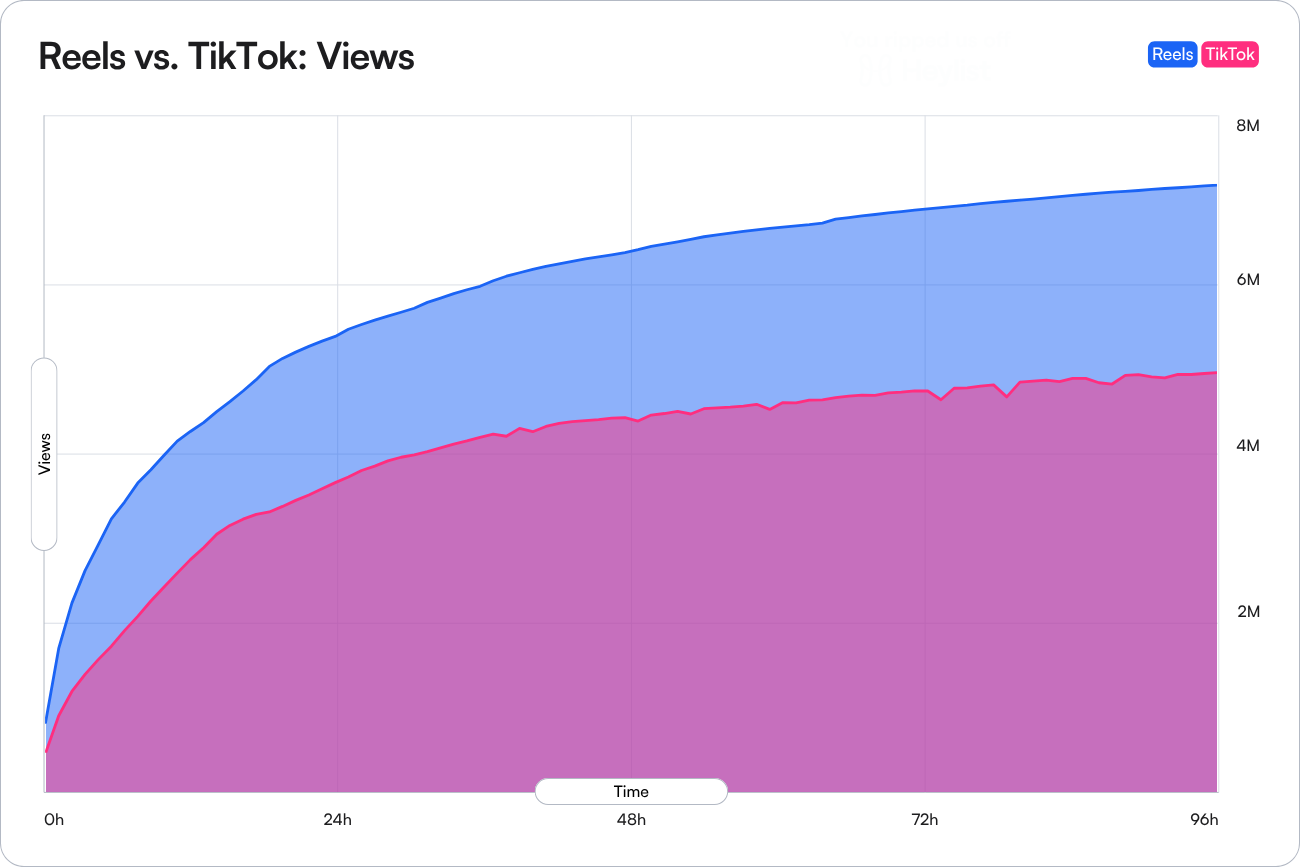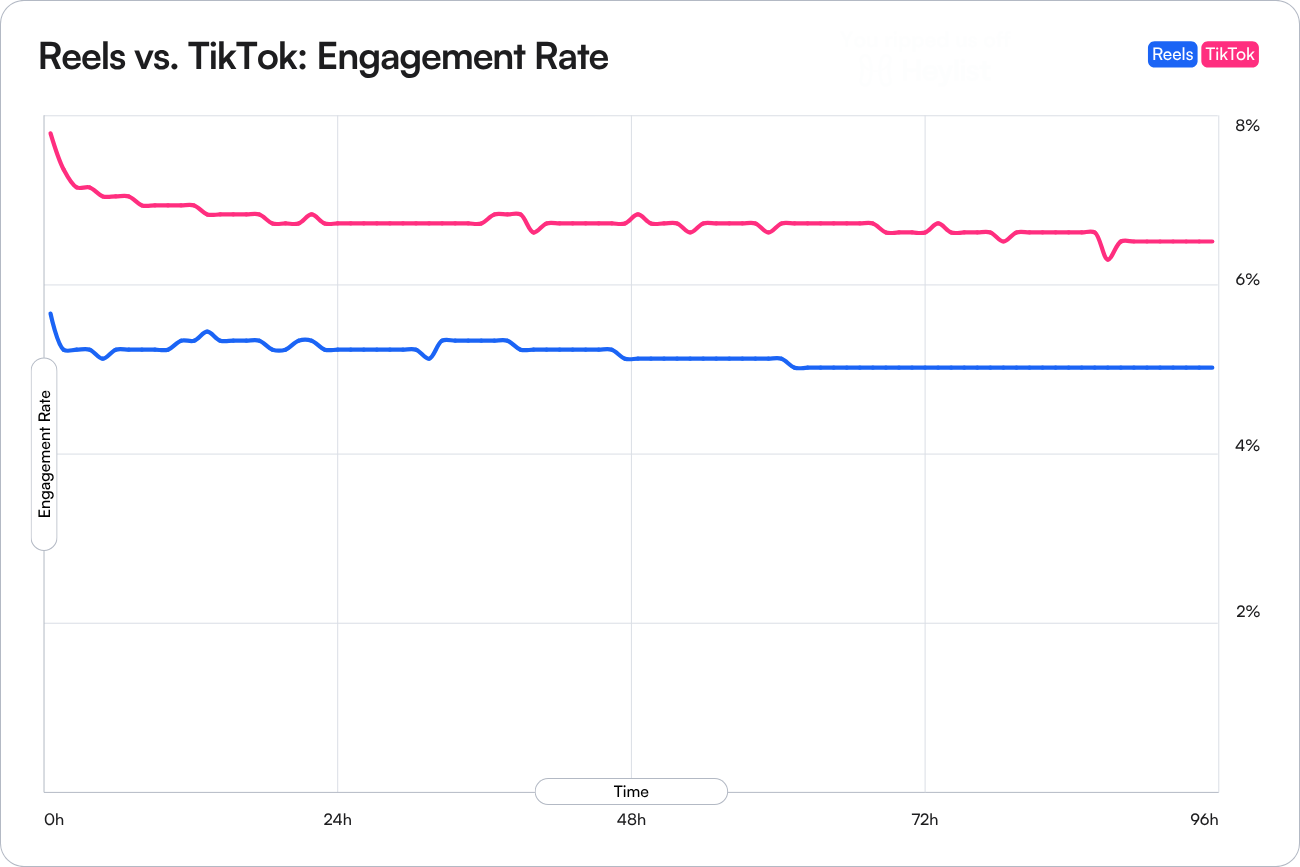
Marketing & Content
Management Platform

November 4, 2025

We’ve already compared Instagram’s internal lineup—Reels, carousels, Stories, and static images. (Spoiler: Reels ruled reach, carousels crushed engagement.) But to get a real pulse on platform performance, we needed to look beyond Meta’s borders.
So, we analyzed 2,000 short-form videos from each platform—Instagram Reels and TikTok—carefully excluding viral anomalies to zero in on typical content performance. What we found wasn’t just interesting. It was strategic.
We focused on three core metrics:
Here’s what the data told us.
One of the most surprising outcomes? Reels consistently delivered more views than TikToks—even when viral content was removed.
That’s right. Despite TikTok’s reputation as the virality engine, our data shows that Reels offer more predictable, guaranteed reach. Think of it this way: while TikTok sometimes hits home runs, Reels are reliably hitting doubles every inning.
For creators and brands, this means if your KPI is eyeballs—Reels should be your primary vehicle.

It’s not just about being seen—it’s about being felt. And in this department, Reels also took the lead in total interactions, edging out TikTok in likes, comments, and shares.
This is a big deal.
Because while TikTok might feel like the cultural heartbeat of Gen Z, Instagram still drives more active participation at scale. Reels users aren’t just watching—they’re tapping, swiping, and sharing.

So is TikTok out of the race? Not even close.
When we crunched the engagement rate (interactions divided by views), TikTok actually came out ahead.
But here’s the catch: the higher engagement rate was largely a byproduct of lower average view counts. With fewer people watching, each interaction had more weight—a math-driven win, not necessarily a performance one.
The trade-off is classic: Reels offer scale. TikTok offers depth.

Here’s how to apply the data:
Meta’s distribution machine works in your favor. You get more reach, more total engagement, and higher content shelf life—especially when paired with image carousels to build deeper engagement afterward.
This is where to test new ideas, tap into niche audiences, and generate concentrated responses. Just know the scale will likely be smaller—by design.
Simple: don’t pick sides—pick strategies.
The smartest creators aren’t just on multiple platforms—they’re playing each one to its strength.
As short-form continues to evolve, one thing’s certain: the best strategy isn’t about which platform is “better.” It’s about knowing which platform is better for this post, this message, this moment.
And that’s where the real wins happen.